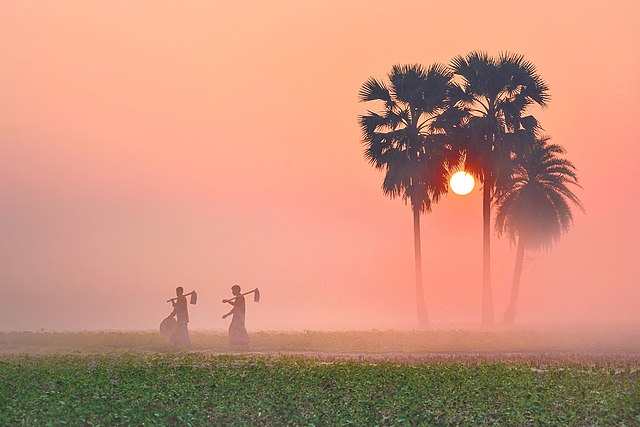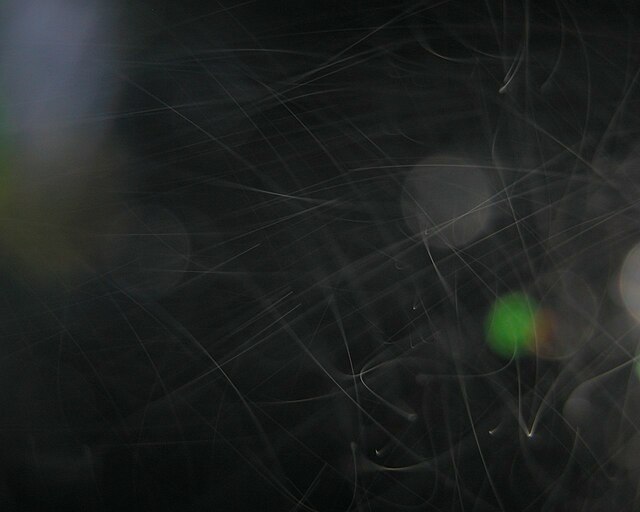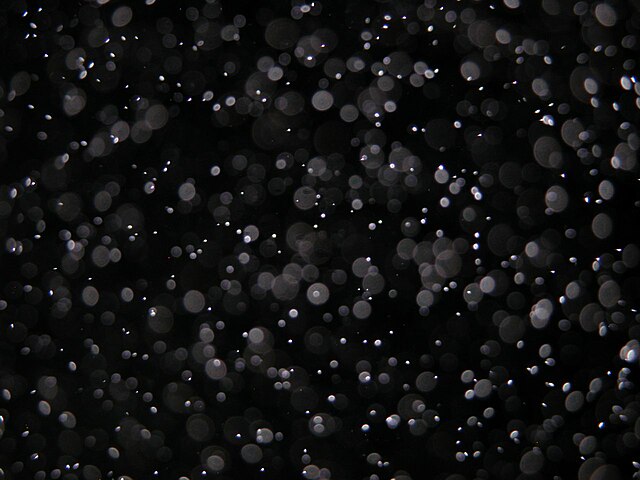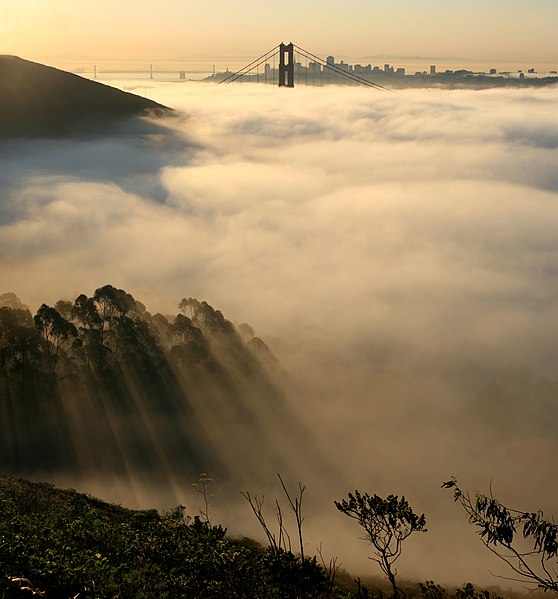Garúa is a Spanish word meaning drizzle or mist. Although used in other contexts in the Spanish-speaking world, garúa most importantly refers to the moist cold fog that blankets the coasts of Peru, southern Ecuador, and northern Chile, especially during the southern hemisphere winter. In Chile, a similar fog is called camanchaca. Garúa brings mild temperatures and high humidity to a tropical coastal desert. It also provides moisture from fog and mist to a nearly-rainless region and permits the existence of vegetated fog oases, called lomas.
Garúa in Lomas de Lachay, near Lima, Peru,
Garúa is similar to camanchaca.
Atiquipa, Peru. The moisture from the garúa is sufficient to permit trees to flourish.
Fog is a visible aerosol consisting of tiny water droplets or ice crystals suspended in the air at or near the Earth's surface. Fog can be considered a type of low-lying cloud usually resembling stratus, and is heavily influenced by nearby bodies of water, topography, and wind conditions. In turn, fog affects many human activities, such as shipping, travel, and warfare.
Light fog in Bangladesh
Minute droplets of water constitute this after-dark radiation fog, with an ambient temperature of −2 °C (28 °F). Their motion trails are captured as streaks.
A close-up view of water droplets forming fog. Those outside the camera lens's depth of field appear as orbs.
Advection fog layer in San Francisco with the Golden Gate Bridge and skyline in the background







